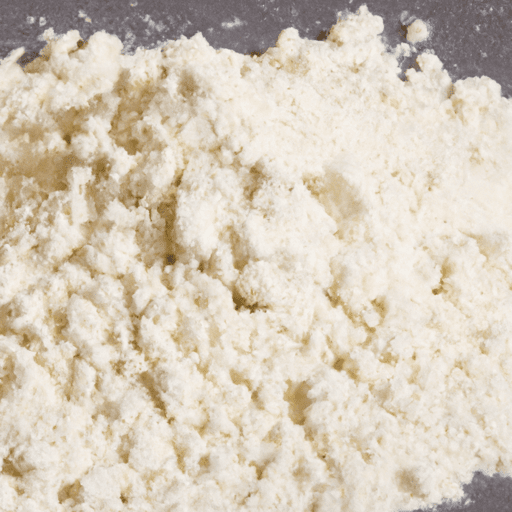The Delicious and Versatile Blanched Almond Flour
If you’ve ever wandered down the baking aisle of your local grocery store, you’ve likely come across blanched almond flour. This gluten-free alternative has become increasingly popular in recent years due to its versatile nature and numerous health benefits. In this blog post, we’re going to dive deeper into the world of blanched almond flour, exploring its taste, common uses in cooking, nutritional value, and some interesting history and facts.
Taste and Texture That Delights
Blanched almond flour is made by grinding blanched almonds into a fine, powdery consistency. Unlike regular almond meal, blanched almond flour is made from almonds with the skins removed, resulting in a lighter and finer texture. The taste of blanched almond flour is subtly sweet with a nutty undertone, making it an excellent choice for both sweet and savory recipes.
A Versatile Ingredient
One of the most remarkable features of blanched almond flour is its wide range of uses in cooking. Its delicate flavor and fine texture make it an ideal substitute for traditional flour, particularly in gluten-free or low-carb diets. Blanched almond flour can be used as a primary ingredient in baking recipes such as cakes, cookies, muffins, and bread. It can also be used as a breadcrumb alternative for coating meat or fish, providing a crispy and flavorful outer layer.
Nutritional Superstar
Not only is blanched almond flour delicious and versatile, but it also packs a nutritional punch. Almonds are known for their nutrient-dense profile, and blanched almond flour is no exception. It is an excellent source of healthy fats, protein, and fiber. Additionally, it contains essential vitamins and minerals such as vitamin E, magnesium, and calcium.
Due to its low carbohydrate content, blanched almond flour has a minimal impact on blood sugar levels, making it an attractive option for individuals following a low-carb or diabetic-friendly diet. It’s worth noting that while blanched almond flour is relatively high in calories, it offers a satisfying and nourishing alternative to traditional flour.
History and Interesting Facts
The use of almonds and almond flour dates back centuries. Almonds have long been cherished for their flavor and nutritional value. In ancient Egypt, almonds were considered a precious ingredient often used in desserts and baked goods. Over the years, almonds and almond flour have become staples in various cuisines worldwide.
Today, blanched almond flour is particularly popular in gluten-free and paleo baking. It provides a light texture while adding a delightful almond flavor to recipes. Its versatility has sparked a surge of creativity in the kitchen, leading to the development of an array of mouthwatering almond flour-based recipes.
Conclusion
Blanched almond flour is truly a game-changer in the world of cooking, offering a delicate flavor, fine texture, and impressive nutritional benefits. Whether you’re looking to make gluten-free treats, add a unique twist to your savory dishes, or simply incorporate more nutrient-dense ingredients into your diet, blanched almond flour is a fantastic choice. So why not give it a try and explore the countless culinary possibilities this versatile ingredient has to offer?
Origin: Blanched almond flour is made from blanched almonds, which are almonds that have had their skins removed. Almonds themselves are native to the Middle East, particularly Iran and surrounding countries. The cultivation and consumption of almonds date back thousands of years, with historical records suggesting the use of almonds in Ancient Egyptian and Roman cultures.
Common Uses: Blanched almond flour is a versatile ingredient used in various culinary applications. It is commonly used in gluten-free and low-carb baking as a substitute for traditional wheat flour. It adds a nutty flavor and a moist texture to baked goods, such as cookies, cakes, and muffins. The fine texture of almond flour also makes it suitable for use in coatings for fried foods, such as chicken or fish.
Nutritional Benefits: Blanched almond flour offers several nutritional benefits. It is a good source of healthy fats, including monounsaturated fats, which are beneficial to heart health. It also contains dietary fiber, protein, vitamins, and minerals. Additionally, blanched almond flour is naturally gluten-free, making it a suitable choice for individuals with gluten sensitivities or celiac disease.
Unique Properties and Historical Significance: One unique property of blanched almond flour is its high fat content, which contributes to the moist texture and rich flavor in baked goods. The absence of the almond skin in blanched almond flour results in a lighter color and milder taste compared to almond flour made from whole almonds.
Almonds themselves have a long history and cultural significance. They have been used in various traditional dishes around the world, including Middle Eastern, Mediterranean, and Indian cuisines. Almonds have also been associated with symbolism and folklore in different cultures, often representing fertility, good fortune, and abundance.




Use the share button below if you liked it.
It makes me smile, when I see it.